Legumes are an excellent source of nutrients that play a key role in maintaining our health. In addition to being delicious and versatile, these miraculous fruits are rich in protein, fiber, vitamins and minerals that provide numerous benefits for everyday health.
First, legumes are an excellent source of plant-based protein. They are an excellent alternative for people who practice a vegetarian or vegan diet, as they provide the essential amino acids needed to build and rebuild muscles.
In addition, legumes are rich in fiber, which is crucial for healthy digestion. Fiber helps keep the intestinal tract regular, preventing digestive problems like constipation. They also help regulate blood sugar levels, which is especially important for people with diabetes.
Legumes are also an excellent source of vitamins and minerals. For example, black beans are rich in iron, which is crucial for preventing anemia, while green lentils provide plenty of folate, important for cell development and growth.
Eating legumes can also help regulate body weight and maintain healthy cardiovascular function. Due to their low content of saturated fat and high fiber content, they can help reduce bad cholesterol levels.
To make the most of the nutritional benefits of legumes, consider including a variety of varieties in your diet. You can use them in a variety of recipes, such as soups, salads, chili or hummus, adding variety and nutrition to your everyday meal. Legumes are not only delicious, they are also key players in maintaining your daily health.
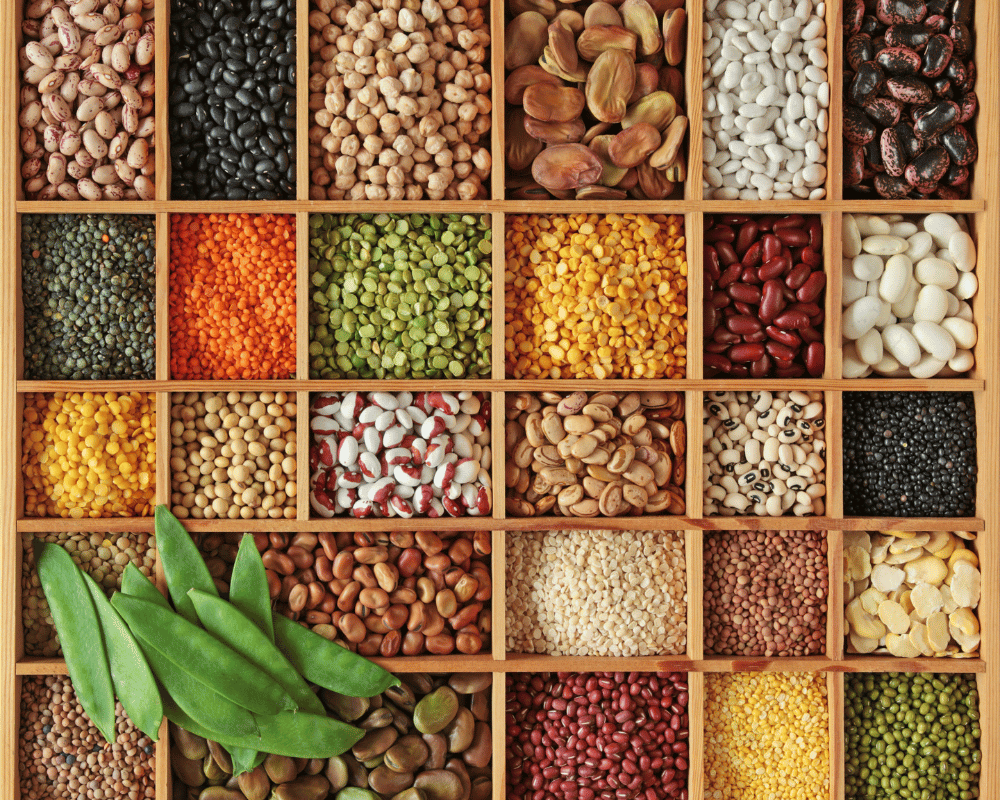
The flavors and health benefits of legumes
Legumes are not only versatile in taste and texture, but also offer a wide range health benefits that can enrich your diet. Let's discover the richness of these diverse legumes and their unique characteristics.
Adzuki beans, for example, is characterized by sweetness and iron richness. This bean is especially popular in Asian cuisine, and besides being delicious, it also contributes to maintaining healthy blood circulation. Azuki beans have a low glycemic index, which means they slow down the absorption of sugar in the blood.
Black beans is rich in fiber and antioxidants, making it the perfect choice for improving digestion and fighting free radicals in the body. In addition, black beans can help keep blood sugar levels stable. It also contains antioxidants such as polyphenols and flavonoids. These antioxidants help fight free radicals and reduce oxidative stress, which can help prevent disease and maintain skin health. Apart from minerals and protein, azuki beans also contain vitamins such as B complex vitamins, especially folate. Folate is essential for the development and maintenance of cell health.
Green and red lentils are excellent sources of protein and fiber. They provide energy and support heart health. Green lentils, with its characteristic taste, is often used in soups and stews, while red lentils it can be the basis for delicious spreads and curries. Both types of lentils contain essential vitamins and minerals such as folate, iron, magnesium, potassium and vitamin B6. Folate is essential for cell development and maintenance, while iron supports the transport of oxygen in the body. Regular consumption of lentils is associated with a reduced risk of certain diseases, including colon cancer and diverticulitis.
Chickpeas are a very popular legume due to their numerous health benefits. It is rich in proteins, fibers and vitamins. Chickpeas are essential for maintaining healthy skin, hair and nails, thanks to the vitamin B7 (biotin) they contain. Also, the zinc in chickpeas helps prevent acne. Chickpeas are rich in antioxidants such as flavonoids and polyphenols. These antioxidants help fight free radicals and reduce inflammatory processes in the body, which can contribute to the prevention of chronic diseases.
Alfalfa, commonly known as alfalfa, is a plant that is often used as a food and nutritional supplement. Alfalfa powder, obtained from the leaves and stems of this plant, provides a number of health benefits due to its rich nutritional value. This legume is extremely rich in nutrients, including vitamins and minerals, that support the immune system and general well-being. Alfalfa powder contains biotin (vitamin B7), which is essential for healthy skin, hair and nails. Also, it has natural detoxification properties and helps the body to eliminate toxins. It helps to cleanse the liver and supports the healthy function of this vital organ. Alfalfa can help lower LDL (bad) cholesterol levels in the blood, which is key to maintaining heart health. The wealth of calcium and vitamin K in alfalfa can support bone health and prevent bone loss.
Although these legumes are different in taste and texture, they have in common that they are remarkably healthy and nutritionally rich. By including a variety of legumes in your diet, you can enjoy different flavors while improving your overall health.
The influence of legumes on health preservation
Legumes are key players in keeping you healthy, even though you might not know it. This diverse and nutritious assortment of fruits and vegetables provides a number of benefits for your physical and mental well-being.
Legumes can help maintain a healthy body weight. The high fiber content and low levels of saturated fat make them an excellent choice for people who want to control their weight.
It is important to note that the preparation of legumes requires a certain amount of time, as they usually need to be soaked in water and cooked for a long time. However, the effort is definitely worth it considering their nutritional benefits.
Whether you use them in salads, soups, stews or as a side dish, legumes are extremely beneficial for your body and well-being.
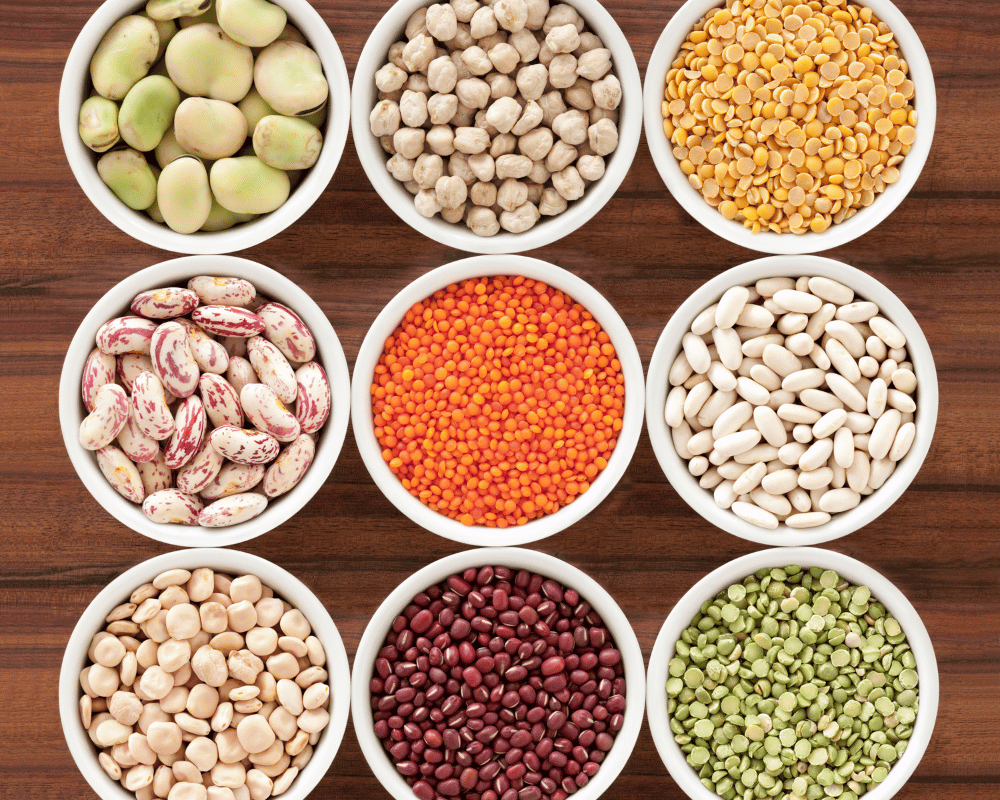
Legumes on a plate: Recipes and tips for a perfect diet
Legumes, such as beans, lentils, chickpeas and azuki beans, are often considered the key to a healthy and balanced diet. They are rich in protein, fiber, vitamins and minerals, making them an ideal addition to your daily menu. In this blog, we'll explore the various ways you can incorporate legumes into your diet, provide you with some delicious recipes and share tips for the best results.
Tips for preparing legumes
Before you dive into making legume recipes, here are some tips on how to prepare them for best results:
- Immersion: Many types of legumes should be soaked before cooking to reduce cooking time and improve digestibility. Usually, the beans are left to soak in water overnight or at least for a few hours before cooking.
- Rinsing: After soaking, rinse the beans well under running water to remove excess salt and sugar.
- Follow the cooking instructions: Each type of legume has its own cooking time. Follow the preparation instructions on the packaging or in the recipes to make sure they are cooked properly.
- Add spices: Legumes often have a mild taste, so it is recommended to add different spices, herbs and spice mixes to enrich the taste of the dish.
Interesting recipes with legumes
Here are some delicious green bean recipes for you to try:

Beans recipe with tomatoes and cumin
Ingredients:
- 1 cup black beans (soaked)
- 1 cup tomato sauce
- 1 onion (finely chopped)
- 2 cloves of garlic (finely chopped)
- 1 teaspoon cumin
- 1/2 teaspoon chili powder (optional)
- Salt and pepper to taste
Instructions:
- Drain the soaked black beans and wash them under cold water.
- Heat a little oil in a large frying pan and fry the onion and garlic until soft and translucent.
- Add the cumin and fry for a few minutes until fragrant.
- Add tomato sauce, black beans, chili (optional), salt and pepper. Reduce the heat, cover and cook for 20-30 minutes until the dish thickens and the beans are tender.
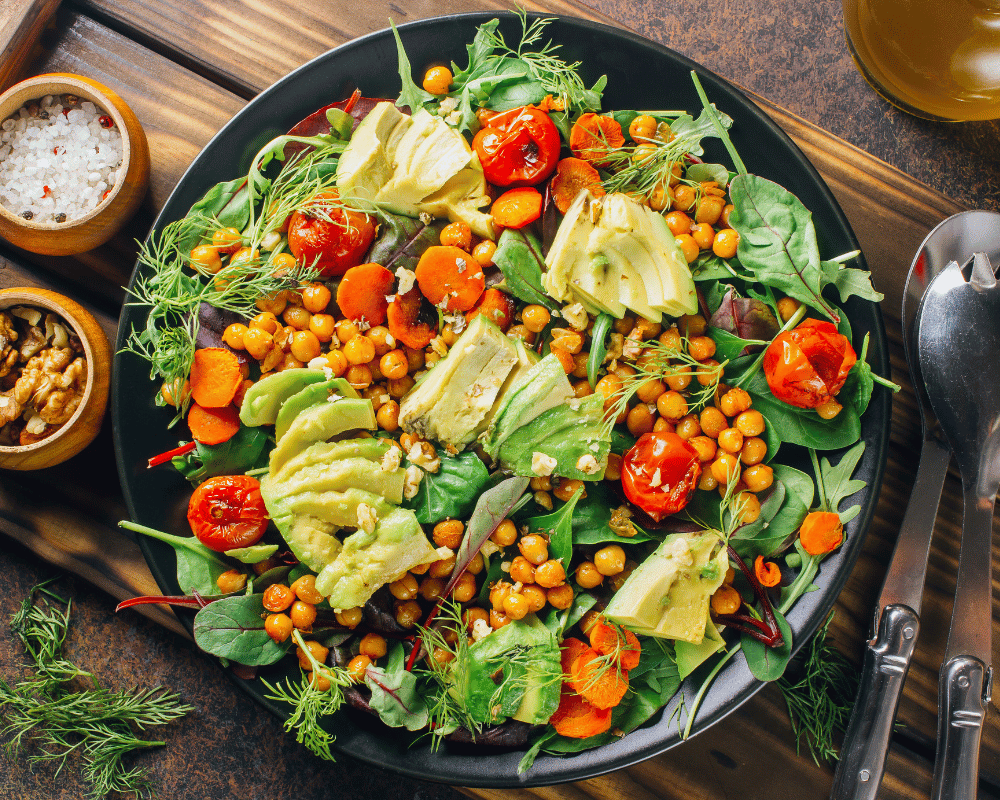
Recipe for salad with chickpeas and avocado
Ingredients:
- 1 cup cooked chickpeas
- 1 avocado (diced)
- 1 tomato (cut into rings)
- 1/4 red onion (thinly sliced)
- Juice of 1 lemon
- Olive oil (to taste)
- Salt and pepper to taste
- Fresh spices of your choice (eg parsley, coriander)
Instructions:
- In a large bowl, combine the chickpeas, chopped avocado, tomatoes and red onion.
- Prepare a dressing of lemon juice, olive oil, salt and pepper. Add it to the salad and mix gently.
- Sprinkle with fresh spices to taste.
- Serve the salad cold as a side dish or a light meal.
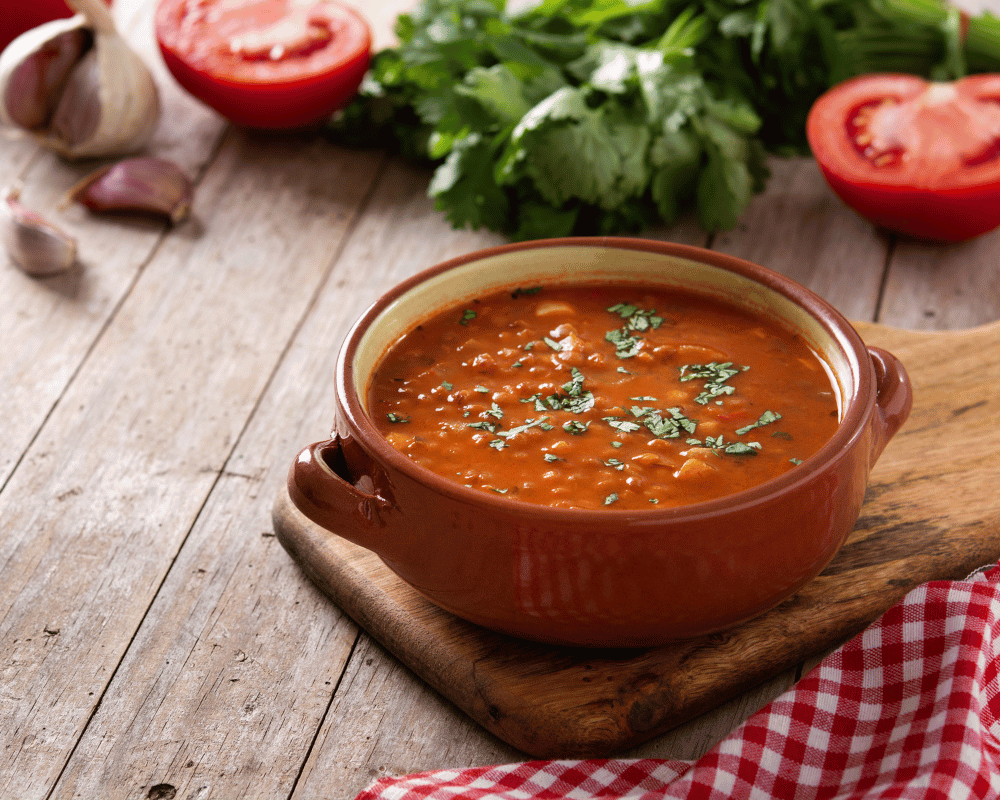
Recipe for red lentil soup
Ingredients:
- 1 cup red lentils (washed and drained)
- 1 onion (finely chopped)
- 2 cloves of garlic (finely chopped)
- 1 carrot (cut into rings)
- 1 potato (diced)
- 1 tablespoon olive oil
- 1 teaspoon cumin
- 1/2 teaspoon turmeric
- Salt and pepper to taste
- Fresh parsley (for decoration)
Instructions:
- Heat the olive oil in a large pot and fry the onion and garlic until translucent.
- Add cumin, turmeric, red lentils, carrots and potatoes. Mix everything well.
- Add enough water to cover all ingredients and bring to a boil. Reduce the heat and simmer for 20-25 minutes or until the vegetables and lentils are cooked.
- Add salt and pepper to taste.
- Serve the soup warm, sprinkled with chopped fresh parsley.
These recipes are just the beginning of creative uses of legumes in your diet. Remember to experiment with different types of legumes and spices to find the combinations that best suit your taste.
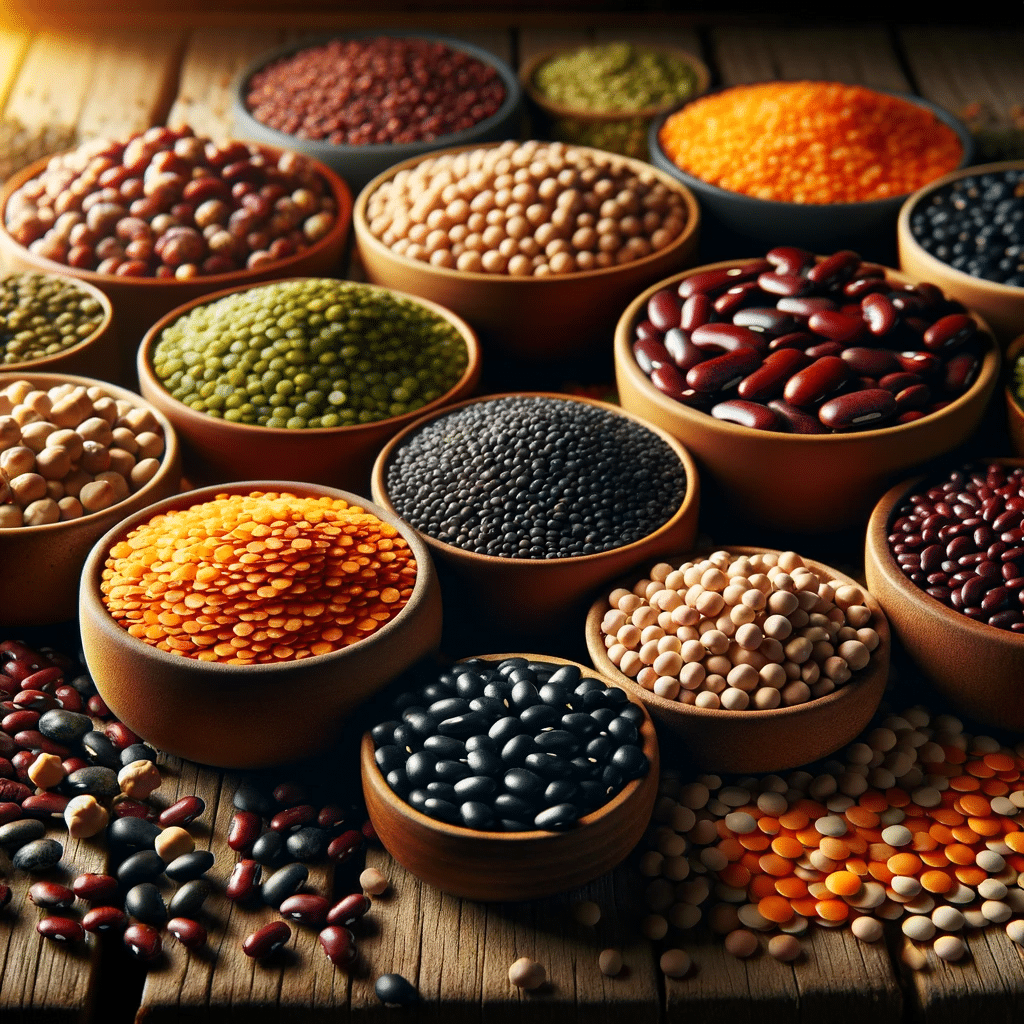
Legumes and insulin resistance
People with insulin resistance can eat legumes, but they should pay attention to how they consume them and how much they consume. Insulin resistance is often associated with problems in the regulation of blood sugar levels, so it is important to properly plan meals to avoid sudden spikes in blood sugar. Here are some guidelines for including legumes in the diet of people with insulin resistance:
Controlled portions
Proper portion control is key. Excessive amounts of legumes can lead to a sudden increase in blood sugar levels. It is recommended that legumes be consumed in moderation, usually about 1/2 to 1 cup of cooked legumes per meal.
Combination with other foods
To prevent a sudden spike in blood sugar, legumes are best combined with other foods that contain fiber, protein and healthy fats. For example, you can combine them with whole grains, vegetables, lean proteins such as chicken or fish, and healthy sources of fat such as nuts or avocados.
Soaking and preparation
Before cooking, legumes should be soaked in water to reduce the sugar and starch content that can cause a rapid rise in blood sugar. Drain and rinse the beans well before cooking to remove excess salt and sugar.
Selection of legumes
Some types of legumes have a lower glycemic index than others. For example, chickpeas have a lower glycemic index compared to white beans. You can consider including low-glycemic legumes in your diet.
Regular control of blood sugar levels
People with insulin resistance should monitor their blood sugar levels regularly to monitor how their diet and legume intake affects those levels. This will help them adjust their diet according to their needs.
Before making any changes to your diet, it is recommended that you consult a doctor or nutritionist to get personalized advice and a diet plan that will suit your specific needs and health.
Conclusion
Legumes are extremely beneficial for your health and can be a tasty addition to your menu. Whether you use them in soups, salads, chilis or as a side dish, legumes will provide you with plenty of nutrients. Remember to use preparation tips to get the best results and enjoy all the health benefits that legumes have to offer.









